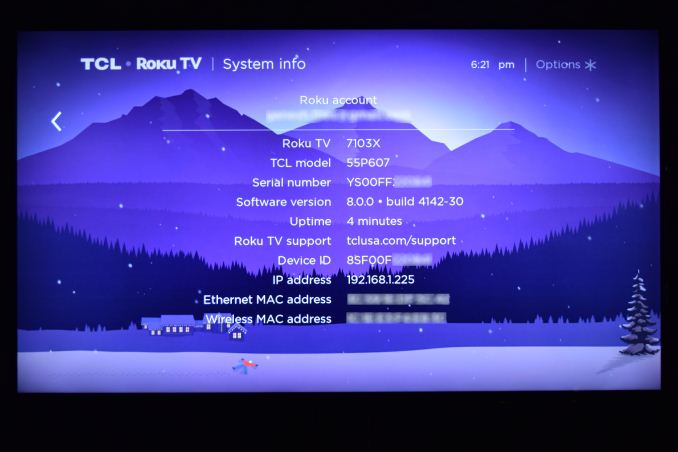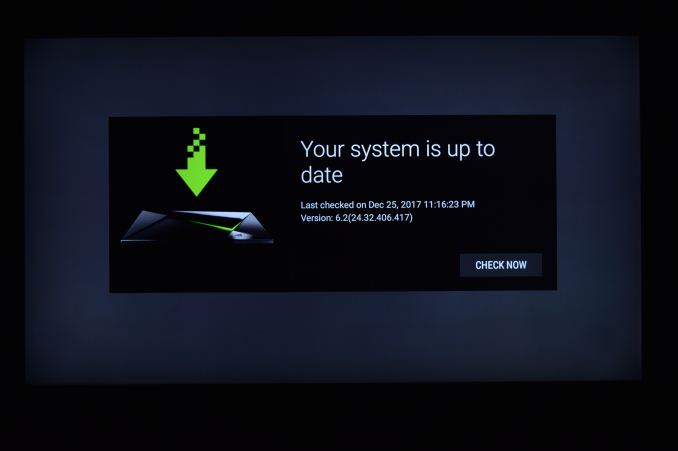A Budget Home Theater & PC Setup: 4K, HDR, UHD Blu-ray, and More
by Ganesh T S on December 26, 2017 8:30 AM ESTEvaluating Display Sources: HTPCs & CE Devices
Home Theater PCs used to be bulky versatile machines that had to support built-in TV tuners, a number of hard disks, as well as optical drives. However, the rising popularity of network TV tuners, network-attached storage (NAS) devices, and OTT streaming have resulted in the a transformation of the functionality that people expect from HTPCs. Simply put, a modern-day HTPC needs to be a flexible and versatile media player capable of handling a multitude of codecs and DRM requirements. The latter is not restricted to the handling of the encoded video. The display output also needs to be secure, while providing enough bandwidth and features to take full advantage of the capabilities of the downstream devices in the setup.
The average consumer often finds the 'it just works' nature of consumer electronic (CE) equipment such as the Roku streamers, game consoles, and standalone Blu-ray players to be attractive. However, for power users, the flexibility of HTPCs (such as the ability to support arcane subtitle formats or specific container features such as MKV chapters, or, even serve as a gaming machine) is simply too much to give up. Certain CE devices such as the NVIDIA SHIELD Android TV STB attempt to offer the best of both worlds. However, they are still closed platforms, and often do not have enough horsepower to fall back upon software decode for unsupported codecs.
Despite my predilection for HTPCs, I wanted to bring out the pros and cons of other closed solutions. Towards this, the evaluation of various options for media playback / display sources addresses the following aspects:
- HDR Support
- OTT Streaming (YouTube and Netflix)
- Local Media Playback (via USB)
- UHD Blu-ray Playback with HDR
The first candidate is the TCL 55P607's built-in Roku platform. Our tests were processed with the TV connected to the network using its wired 10 / 100 Mbps interface and Wi-Fi disabled. Firmware version 8.0.0 4142-30 was used.
The second solution in our evaluation set is one of the most popular Android TV STBs in the market - the NVIDIA SHIELD Android TV (SATV). Despite having launched back in 2015, the combination of high-end hardware and regular firmware updates have kept it at the top of the media player / Android TV STB market. Our tests were processed with the SHEILD connected to the network using its wired 1 Gbps interface and Wi-Fi disabled. Firmware version 6.2 was used.
The use of a RF remote / controller, combined with IP control using a smartphone app, mean that the SHIELD can be safely tucked away out of sight in a home theater setup.
Moving on to the HTPC front, we have three different PCs, with configurations and driver versions listed in the table below.
| Compact Home Theater PC Candidates - 2017 | |||
| PC | Zotac ZBOX MAGNUS EN1080K | ASRock Beebox-S 7200U | Intel NUC7i7BNHX1 |
| CPU | Intel Core i7-7700 | Intel Core i5-7200U | Intel Core i7-7567U |
| GPU | NVIDIA GTX 1080 (8GB GDDR5X) | Intel HD Graphics 620 | Intel Iris Graphics 650 |
| RAM | Corsair Vengeance 2x16GB DDR4-2667 SODIMM | Micron 16ATF1G64HZ 2x8GB DDR4-2133 SODIMM | Crucial Ballistix Sport LT 2x16GB DDR4-2400 SODIMM |
| Storage | Toshiba OCZ RD400 (512GB) | Kingston SSD Now V+ SNV325S2 (128GB) | Samsung SSD 840 EVO (500GB) + Intel Optane (16GB) |
| BIOS | 2K170814 | 1.73 | BNKBL357.86A.0054 |
| GPU Driver | 388.31 | 4877+ (beta) | 4877+ (beta) |
| Specifications | Zotac ZBOX MAGNUS EN1080K Specifications | ASRock Beebox-S 7200U Specifications | Intel NUC7i7BNHX1 Specifications |
| Pricing (NOT as configured) | USD 2000 (with 120GB SSD, 1TB HDD, 8GB RAM, and Windows 10) | USD 349 (Barebones) | USD 506 (Barebones) |
Note that we are using a beta driver from Intel that will be released to the public in January 2018. The reason behind the use of this driver will be apparent in our UHD Blu-ray Playback section.
Windows 10 Fall Creators Update was used as the OS for all the tests done using the above PCs. This version is critical for cutting-edge HTPC functionality, as it brings HDR desktop and media payback support into the stable release channel.













191 Comments
View All Comments
pjcamp - Wednesday, December 27, 2017 - link
The one thing you didn't mention is what keyboard you are using. I haven't been happy with any of the ones I've used so a little help would be, well, helpful.DIE_BETA_SOY_BOYS - Wednesday, December 27, 2017 - link
"budget"What a useless article
watersb - Wednesday, December 27, 2017 - link
I, for one, enjoyed this write-up very much. I have been out of the AV Zone for a decade, but as a musician and PC enthusiast I was curious to see how this played out.A write-up like this: I have done similar tests for audio-only gear, and it took 50 hours of work. Maybe I'm too slow.
And finally, this may be a dumb question, but for a Home Theater setup, what keyboard/pointing device work best for you? I need to get something. My ten-year-old Gyration Mouse/keyboard has died. Not kidding. It was great. Backlit keyboard that can see duty as primary PC keyboard preferred.
What are you all using?
Shaan1969 - Thursday, December 28, 2017 - link
watersb, Logitech K830 (~$50) is the best one with long lasting rechargeable battery with back-lit option. I have been using it for the last few years without any issues.watersb - Tuesday, January 2, 2018 - link
Thanks! Was on my list, at $50 the price has come down a bit since last I looked.Shaan1969 - Thursday, December 28, 2017 - link
Ganesh, thank you for taking time to write up a great article. I thoroughly enjoyed reading it and planning to upgrade my HTPC accordingly this weekend.Everyone's definition of budget is different and I wish readers focus on the content of the article rather than accusing the writer.
milkod2001 - Thursday, December 28, 2017 - link
good read, you might want to also upgrade those curtains granny bought and insisted to use when on last visit while you are in this upgrading process.UtilityMax - Friday, December 29, 2017 - link
This situation with the high cost and pain-in-the-butt involved in 4K HTPC setup compared to buying Playstation 4, Xbox, or Roku reminds me of a similar situation that happened with home routers in the late 1990s. As the Internet connections started becoming more affordable (be it dialup or broadband) a whole lot of geeks wanted to come up with solutions so that their entire home network could connect to the internet with just one IP address. A whole lot of them turned to setting up a dedicated PC running Linux to act as their gateway to the internet for the purpose of firewalling and network address translation (NAT). This made even people originally not interested in using Linux start exploring the Linux systems because back in the 1990s Linux distributions were way better than Windows or Macs at advanced networking stuff.Then an interesting thing happened. A cheap Taiwanese-made router with firewall, NAT, and a 4-5 port 100Mbps switch became available for something like 50 bucks around year 1999-2000. This has near instantly killed the concept of setting up manually a dedicated PC to act as your router gateway. Today you don't even have to buy a dedicated router, because your broadband cable modem probably already comes integrated with wifi, router, NAT, firewall, switch, and all that (mine does).
The same way we are observing the situation where various set top boxes or "sticks" costing under a couple of hundred bucks, gaming consoles, and even smart TVs have pretty much near eliminated the whole point of building a dedicated HTPC. HTPC is basically a dinosaur.
Combine that with the fact that most people out there still don't give a damn about 4K content, don't have 4K TVs, don't have access to 4K cable (duh!), and don't want to pay for either 4K BD discs or for high speed internet conections required for 4K streaming, and you see why building your own HTPC is going to be just like banging your head against a wall.
rapster - Friday, December 29, 2017 - link
Totally agree. The NVIDIA Shield has - for me - made the PC moot. This time around I based my system on a Shield that streams from the internet and Synology disk array, a “budget” receiver, a BD player, some great speakers, and an old 1080p TV. Not even sure what use a PC would serve.mikato - Thursday, January 18, 2018 - link
Sounds good. I’ll have to check out the Shield. But you can’t bring this to a friend’s house and plug into their TV or home theater. I want that too :)